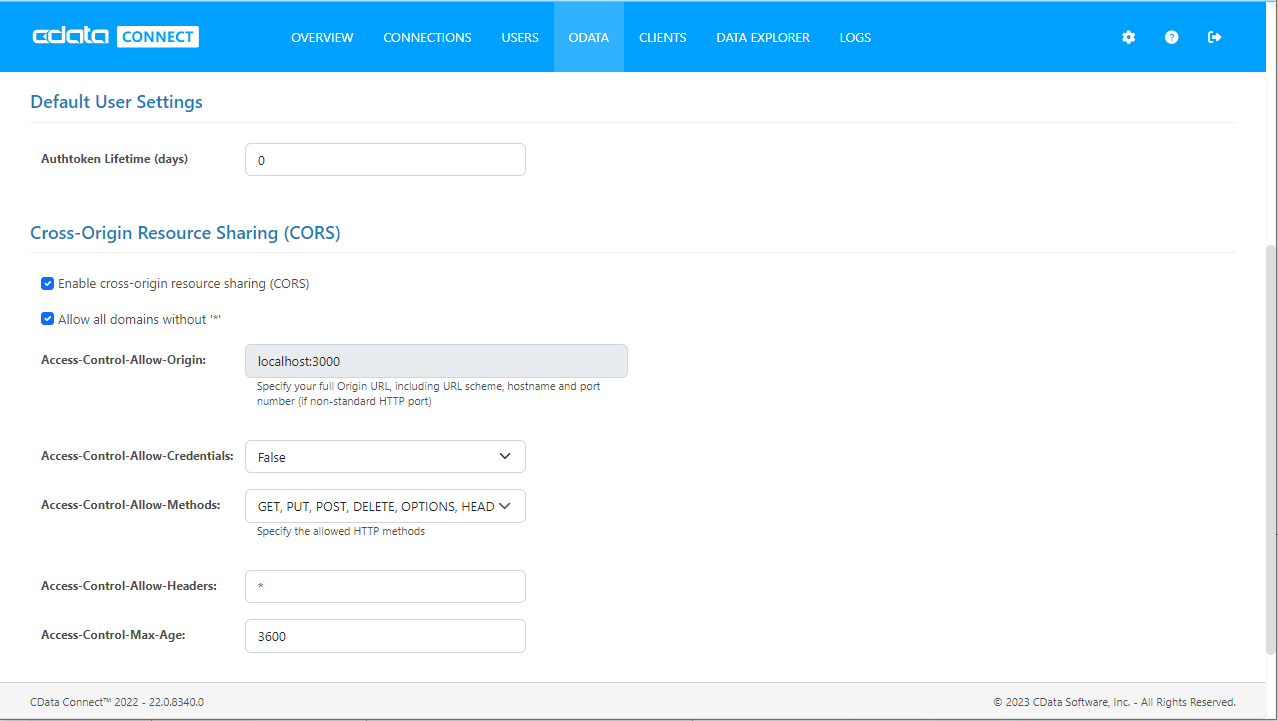Model Context Protocol (MCP) finally gives AI models a way to access the business data needed to make them really useful at work. CData MCP Servers have the depth and performance to make sure AI has access to all of the answers.
Try them now for free →DataBind Wijmo Grid to MongoDB Data
Provide real-time MongoDB data to interactive controls.
The Connect Server enables you to use Web services to connect to and query MongoDB data. This article details how to import an OData feed of MongoDB data into Wijmo Grid.
About MongoDB Data Integration
Accessing and integrating live data from MongoDB has never been easier with CData. Customers rely on CData connectivity to:
- Access data from MongoDB 2.6 and above, ensuring broad usability across various MongoDB versions.
- Easily manage unstructured data thanks to flexible NoSQL (learn more here: Leading-Edge Drivers for NoSQL Integration).
- Leverage feature advantages over other NoSQL drivers and realize functional benefits when working with MongoDB data (learn more here: A Feature Comparison of Drivers for NoSQL).
MongoDB's flexibility means that it can be used as a transactional, operational, or analytical database. That means CData customers use our solutions to integrate their business data with MongoDB or integrate their MongoDB data with their data warehouse (or both). Customers also leverage our live connectivity options to analyze and report on MongoDB directly from their preferred tools, like Power BI and Tableau.
For more details on MongoDB use case and how CData enhances your MongoDB experience, check out our blog post: The Top 10 Real-World MongoDB Use Cases You Should Know in 2024.
Getting Started
Configuring Connect Server
To work with live MongoDB data in Wijmo Grid, we need to connect to MongoDB from Connect Server, provide user access to the new virtual database, and create OData endpoints for the MongoDB data.
Add a Connect Server User
Create a User to connect to MongoDB from Wijmo Grid through Connect Server.
- Click Users -> Add
-
Configure a User
![Creating a new user]()
-
Click Save Changes and make note of the Authtoken for the new user
![Connect Server users]()
Connect to MongoDB from Connect Server
CData Connect Server uses a straightforward, point-and-click interface to connect to data sources and generate APIs.
-
Open Connect Server and click Connections
![Adding a connection]()
- Select "MongoDB" from Available Data Sources
-
Enter the necessary authentication properties to connect to MongoDB.
Set the Server, Database, User, and Password connection properties to connect to MongoDB. To access MongoDB collections as tables you can use automatic schema discovery or write your own schema definitions. Schemas are defined in .rsd files, which have a simple format. You can also execute free-form queries that are not tied to the schema.
![Configuring a connection (SQL Server is shown).]()
- Click Save Changes
- Click Privileges -> Add and add the new user (or an existing user) with the appropriate permissions (SELECT is all that is required for Reveal).
Add MongoDB OData Endpoints in Connect Server
After connecting to MongoDB, create OData Endpoints for the desired table(s).
- Click OData -> Tables -> Add Tables
- Select the MongoDB database
-
Select the table(s) you wish to work with and click Next
![Selecting a Table (SQL Server is shown)]()
- (Optional) Edit the resource to select specific fields and more
- Save the settings
(Optional) Configure Cross-Origin Resource Sharing (CORS)
When accessing and connecting to multiple domains from an application such as Ajax, there is a possibility of violating the limitations of cross-site scripting. In that case, configure the CORS settings in OData -> Settings.
- Enable cross-origin resource sharing (CORS): ON
- Allow all domains without '*': ON
- Access-Control-Allow-Methods: GET, PUT, POST, OPTIONS
- Access-Control-Allow-Headers: Authorization
Save the changes to the settings.

Connect to MongoDB Data using Wijmo Grid
Create a Real-Time Grid
Follow the steps below to consume MongoDB data from the Wijmo JavaScript controls:
-
Load the required Wijmo, jQuery, and Knockout libraries:
<script src="http://code.jquery.com/jquery-1.11.1.min.js"></script> <script src="http://code.jquery.com/ui/1.11.0/jquery-ui.min.js"></script> <!--Theme--> <link href="http://cdn.wijmo.com/themes/aristo/jquery-wijmo.css" rel="stylesheet" type="text/css"> <!--Wijmo Widgets CSS--> <link href="http://cdn.wijmo.com/jquery.wijmo-pro.all.3.20161.90.min.css" rel="stylesheet" type="text/css"> <!--Wijmo Widgets JavaScript--> <script src="http://cdn.wijmo.com/jquery.wijmo-open.all.3.20161.90.min.js"></script> <script src="http://cdn.wijmo.com/jquery.wijmo-pro.all.3.20161.90.min.js"></script> <script src="http://cdn.wijmo.com/interop/wijmo.data.ajax.3.20161.90.js"></script> <!--Knockout JS Library--> <!-- Both of the links below can work --> <script src="http://cdn.wijmo.com/wijmo/external/knockout-2.2.0.js"></script> <!--<script src="http://cdn.wijmo.com/amd-js/3.20161.90/knockout-3.1.0.js"></script>--> <!--Wijmo Knockout Integration Library--> <script src="http://cdn.wijmo.com/interop/knockout.wijmo.3.20161.90.js"></script>
-
Create a ViewModel and connect to it using the ODataView. You will need to replace the placeholder values for
the URL of the API Server, an API Server user, and the authtoken for that user.
<script id="scriptInit"> $.support.cors = true; var viewModel; function ViewModel() { var restaurantsView = new wijmo.data.ODataView("http://MyServer:MyPort/api.rsc/restaurants", { ajax: { dataType: "jsonp", username: "MyUser", password: "MyAuthtoken", data: { "$inlinecount": null } }, pageSize: 10 }); restaurantsView.refresh(); restaurantsView.nextPage(); this.restaurants = restaurantsView; this.prevPage = function () {restaurantsView.prevPage();}; this.nextPage = function () {restaurantsView.nextPage();}; } $(document).ready(function () { viewModel = new ViewModel(); ko.applyBindings(viewModel, $(".container").get(0)); }); </script> -
DataBind: Below is a simple table with some paging buttons, which you can paste into the body section of your markup.
<h2>Connect to Live MongoDB Data in Real Time</h2> <h3>Restaurants</h3> <div> <button title="previous page" class="pagebuttons" data-bind="click: prevPage, button: {}"> <span class="ui-icon ui-icon-seek-prev" /> </button> <button title="next page" class="pagebuttons" data-bind="click: nextPage, button: {}"> <span class="ui-icon ui-icon-seek-next" /> </button> </div> <table id="demo-grid" data-bind="wijgrid: { data: restaurants, showFilter: true, allowPaging: true, pagerSettings: { position: 'none'}, columnsAutogenerationMode: 'append', }" > </table>
At this point, you may be prompted to re-enter the username and authtoken. After doing so, a resulting table
or grid should appear, as seen below. You can filter and sort through pages of MongoDB data.

Free Trial & More Information
If you are interested in connecting to your MongoDB data (or data from any of our other supported data sources) from Wijmo Grid, sign up for a free trial of CData Connect Server today! For more information on Connect Server and to see what other data sources we support, refer to our CData Connect page.






